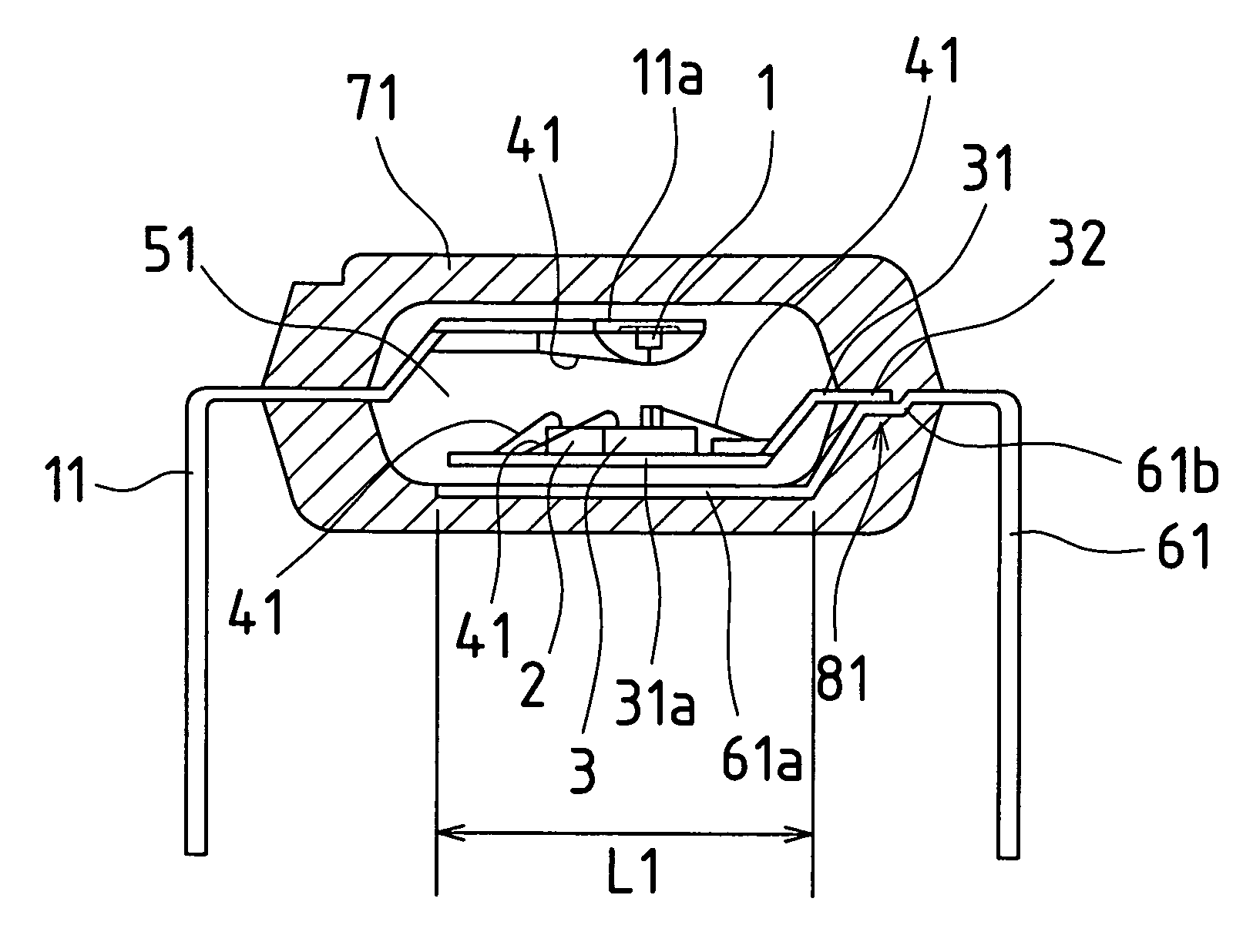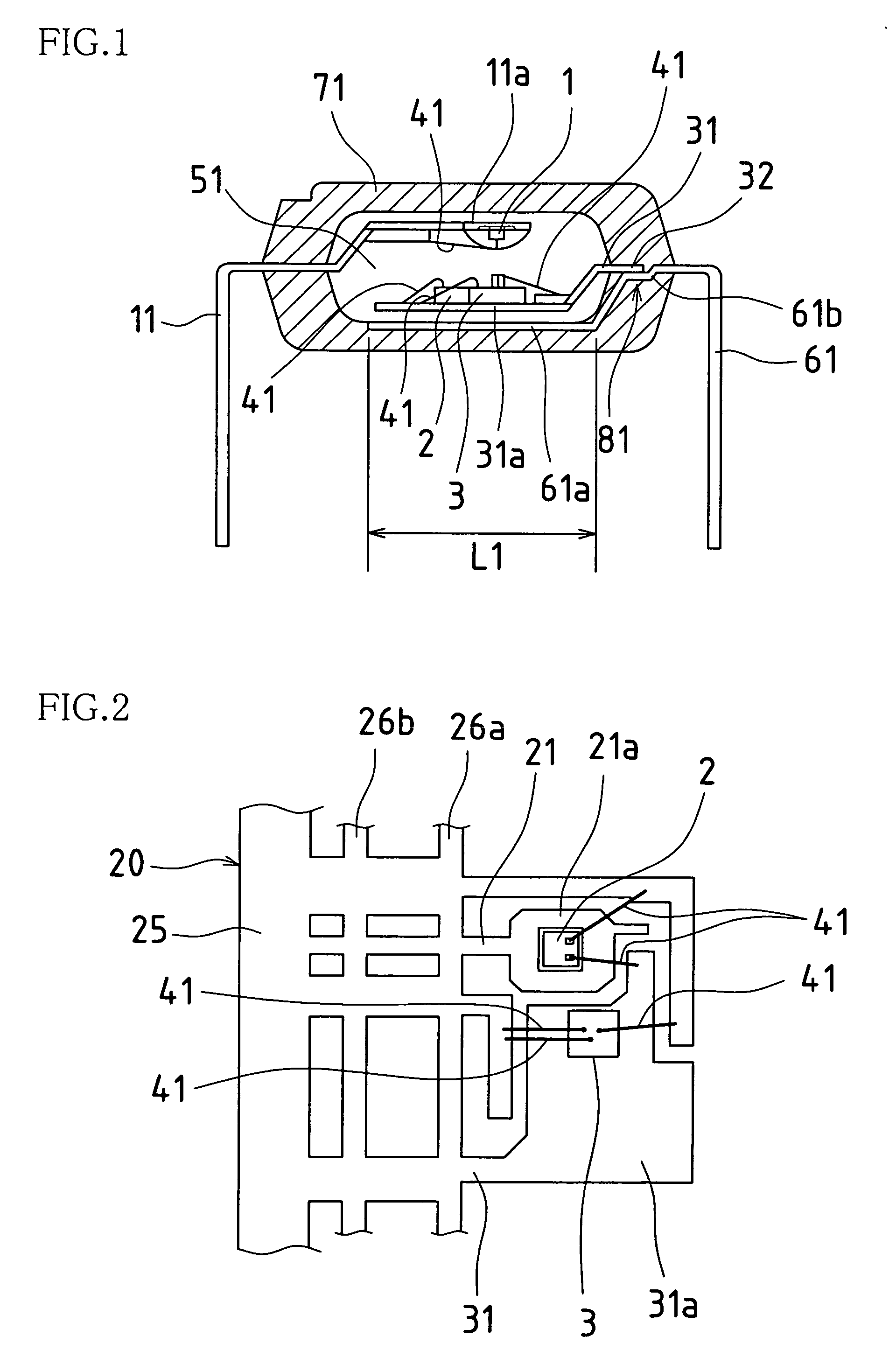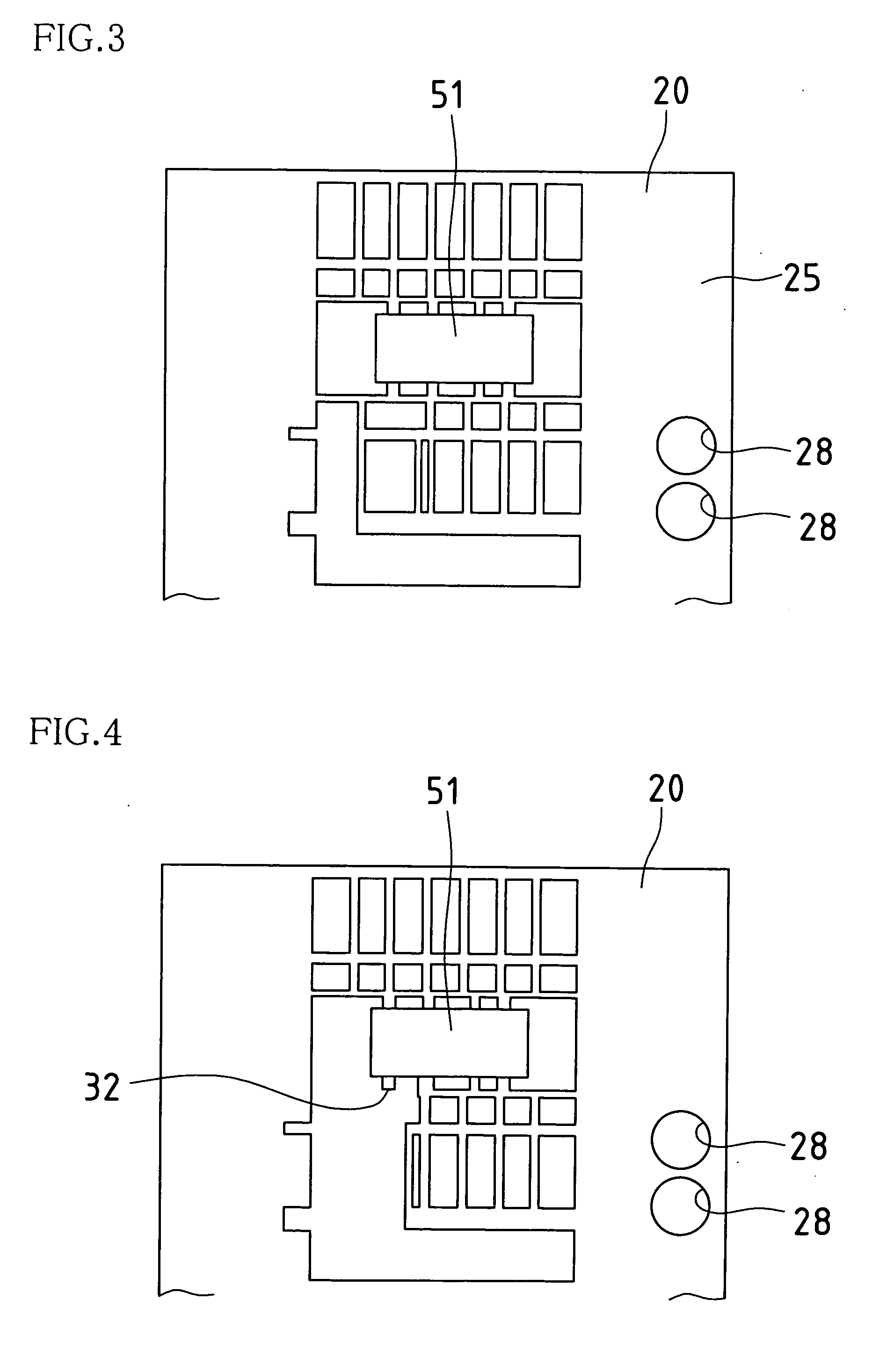Optical coupling element, method for producing the optical coupling element, and electronic device equipped with the optical coupling element
a technology of optical coupling elements and coupling elements, which is applied in the direction of electrical equipment, semiconductor devices, semiconductor/solid-state device details, etc., can solve the problems of increasing the size of the package, increasing the number, and increasing the power consumption, so as to improve the heat dissipation properties of the optical coupling element, improve the heat dissipation, and high melting point
- Summary
- Abstract
- Description
- Claims
- Application Information
AI Technical Summary
Benefits of technology
Problems solved by technology
Method used
Image
Examples
embodiment 1
[0027]FIG. 1 is a cross-sectional diagram that shows the structure of an optical coupling element of the present invention, and FIG. 2 is a plan view that shows a light receiving element and power element that have been mounted to a frame substrate before processing of a light receiving lead frame and power lead frame.
[0028] In the optical coupling element of Embodiment 1, after a light emitting element 1 is mounted to a header 11a of a light emitting lead frame 11, a light receiving element 2 is mounted to a header 21a (however, not shown in FIG. 1, because here a cross-section is taken of a heat dissipating lead frame 61 portion, described later) of a light receiving lead frame 21, and a power element 3 is mounted to a header 31a of a power lead frame 31, the light emitting element 1, the light receiving element 2 and the power element 3 are connected to each lead portion with wires 41, and pre-coating or the like is performed if necessary. In a state with the light emitting elem...
embodiment 2
[0044]FIG. 7 is a cross-sectional diagram that shows the structure of an optical coupling element of the present invention.
[0045] In above Embodiment 1, the heat sink 61a is in a state completely embedded within the secondary molding resin 71, but in order to allow the function as the heat sink 61 to be maximally exhibited, it is preferable that a portion of the heat sink 61a is exposed outside of the secondary molding resin 71. In consideration of this point, in Embodiment 2 the shape of the heat sink 61a is devised as shown in FIG. 7.
[0046] That is, by forming an end portion of the heat sink 61a bent upward, and allowing that bent end portion 61a1 to make contact with the bottom face of the primary molding resin 51, a shape is adopted in which a space is formed where the secondary molding resin is filled up between the bottom face of the primary resin mold 51 and an upper face 61a2 of the heat sink 61a, and a bottom face 61a3 of the heat sink 61 makes contact with an interior fa...
PUM
 Login to View More
Login to View More Abstract
Description
Claims
Application Information
 Login to View More
Login to View More - R&D
- Intellectual Property
- Life Sciences
- Materials
- Tech Scout
- Unparalleled Data Quality
- Higher Quality Content
- 60% Fewer Hallucinations
Browse by: Latest US Patents, China's latest patents, Technical Efficacy Thesaurus, Application Domain, Technology Topic, Popular Technical Reports.
© 2025 PatSnap. All rights reserved.Legal|Privacy policy|Modern Slavery Act Transparency Statement|Sitemap|About US| Contact US: help@patsnap.com



